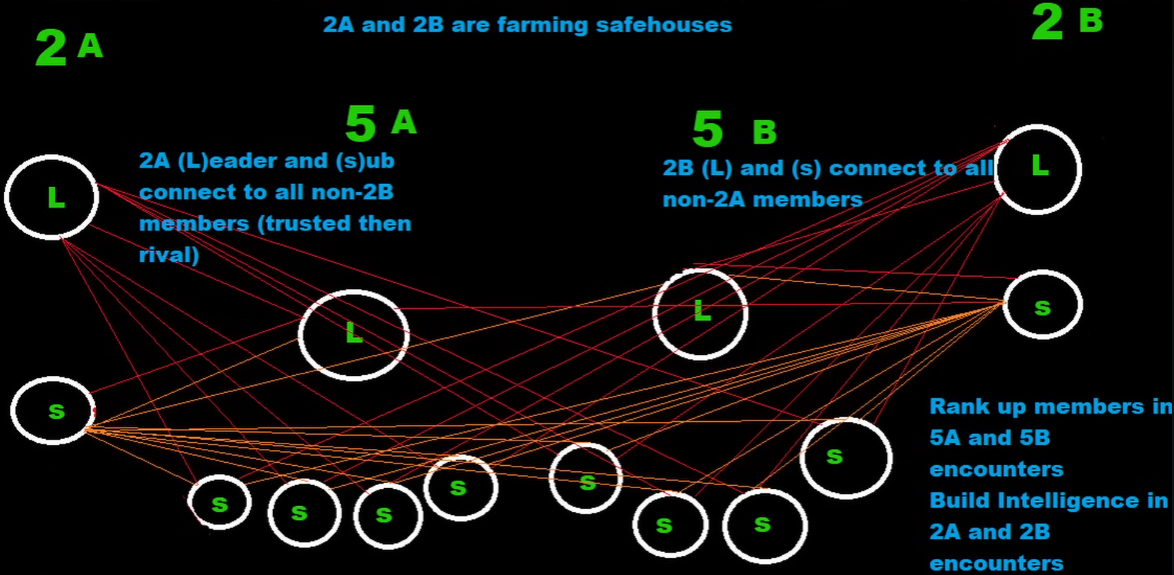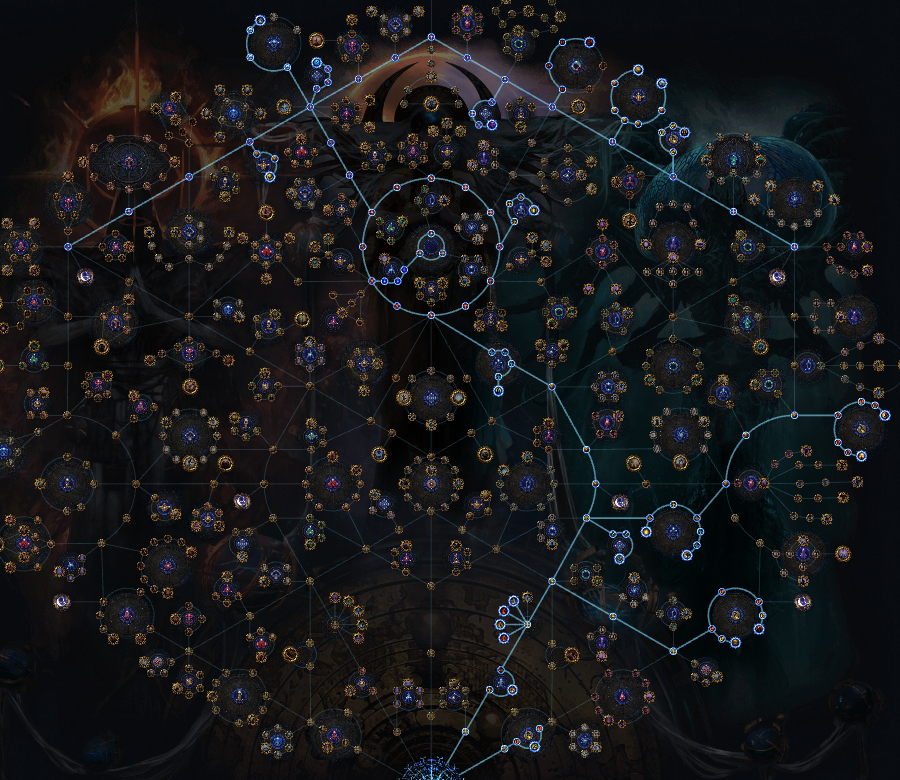With the long-awaited changes to Betrayal dropped into the game alongside the Path of Exile 3.26, here we update the new PoE 2 3.26 Betrayal Syniciate cheat sheet on where you get the new rewards and the best strategies to farm Betrayal in the Secrets of the Atlas league!
PoE 3.26 Betrayal & Syndicate Guide
Path of Exile 3.26 Secrets of the Atlas introduces a significant overhaul to the Betrayal league, separating the mastermind mechanic from the safe house mechanic. The update emphasizes completing all aspects rather than choosing between them. When completing a safe house, there is now a chance, roughly 1 in 10 to 1 in 15 per about 30 safe houses, to drop a mastermind fragment, which leads to a fight against Katarina. This fight is faster and rewards veiled exalted orbs, with Katarina’s unique items featuring new, powerful Katarina-specific modifiers.
Additionally, the league introduces "all flames," a resource dropped by Katarina that can be placed in maps to modify monster packs, drops, experience, and loot tables, similar to scarabs. The mastermind mechanic is mostly separated from the rest of the Syndicate except for fragment drops from safe houses.
Most rewards from syndicate members in the safe houses have also been changed. Some familiar rewards remain, such as Graviticious in Transportation who, upon completing safe houses, still gives full stacks of divination cards. Although the rarest cards seen so far are three cards for one Valdo's map, the potential remains high for valuable rewards.
Other benches provide new crafting opportunities like adding implicits to corrupted items or using reflecting mist, but the focus here is on setting up syndicates to farm specific rewards efficiently.
PoE 3.26 Betrayal Syndicate Cheat Sheet (Rewards & Divisions)
Credit to simplyVizniz
PoE 3.26 Secrets of the Atlas Betrayal Farm Strategies
The key to farming in Betrayal 3.26 lies in structuring syndicate boards to maintain stable and repeatable runs of safe houses you want to farm. The leader of a safe house loses all their stars upon completion, and the game replenishes members to maintain the required number per house. However, having more than two members often causes the rest of the board to shuffle randomly, which can disrupt stable setups.
PoE 3.26 Betrayal Syndicate Safehouse Farm Strategy
A common and effective approach is the "5522" setup, where fortification and research each have five members, and intervention and transportation each have two. This arrangement ensures that as leaders lose stars and rank down, the game will refill the safe house with the correct number of members, maintaining consistency.

There are several variations:
Balanced 5522 Setup: Connect all five-member safe houses evenly to the two-member ones.
Focused Setup: Connect only the five-member houses to a single two-member house to farm one safe house intensively.
Hybrid Setup: Connect the secondary two-member house slightly to the primary two, allowing occasional additional safe houses while mainly focusing on one.
The optimal setup involves crossing the leaders of one safe house with the non-leaders of the other and vice versa, ensuring ranks rebuild efficiently while maintaining farming targets.
PoE 2 New Betrayal Board Setup
The new safehouse farming strategy begins with establishing rivalries and connections between syndicate members.

The process involves:
Starting with a blank board: Place free roaming syndicate members with zero stars to allow flexible movement.
Cross-linking leaders and subordinates: Move one member from transportation to intervention and vice versa, creating rival links between leaders and non-leaders across houses.
Demoting and interrogating members: This helps to shuffle ranks and positions, allowing better control over who stays or moves between safe houses.
Maintaining stable connections: Avoid running safe houses during setup to prevent members from moving randomly or building unwanted relationships. Instead, run syndicate encounters to manipulate positioning.
Executing members in encounters: Executing syndicate members during encounters grants intelligence points and helps manage stars. Executing leaders last keeps the execute option available longer.
Managing floating members: Use extra syndicate members to fill other houses like fortification or research, keeping the focus houses clear.
Running safe houses repeatedly: After setup, run the targeted safe houses (e.g., intervention and transportation) repeatedly, leveraging the rival connections to rebuild ranks quickly and maintain efficient farming loops.
Handling reinforcements and bargain options: Choose options that build intelligence or favor your farming goals, avoiding those that remove members or reduce ranks unnecessarily.
By following these steps, farming in Betrayal 3.26 becomes more consistent, flexible, and efficient. The guide suggests a casual, adaptable approach while highlighting the importance of the cross-link system and star management to farm the safe houses desired.
PoE 3.26 Best Betrayal Atlas Tree Strategy for Trading Mode
The Betrayal Atlas tree strategy designed for trading and map pushing focuses on maximizing Atlas progression through nodes that increase map drops, mission chances, and map power. This includes taking every map drop node, Kiraak mission nodes, and shrine nodes to boost character power and map quality. The tree emphasizes packed with energy for damage, speed, and resistances, combined with Nico nodes that guarantee his presence in maps.

This setup grants an 85% chance for maps to drop one tier higher and 26% chance to receive Kiraak missions upon map completion, aiding fast progression through the Atlas. After securing these core nodes, additional points can be allocated to quantity and rarity to sustain map runs, and nodes like searing exarch to manage currency sustain.
Strategic pathing through the center wheel allows access to overloaded circuits, which can grant free random map crafting options, synergizing with shaping the mountains for added map power. Early access to blight maps is also supported, useful for builds that benefit from early anointments. Once the core setup is complete, the player can comfortably farm in red maps and pivot to any content desired, such as expedition or ritual, depending on build needs.
PoE 3.26 Betrayal Atlas Tree Strategy for SSF Mode
For Solo Self-Found (SSF) league start, two main Atlas tree strategies are recommended: a map pushing tree and a betrayal-focused tree. The betrayal-based tree prioritizes nodes that grant 100% chance of betrayal encounters on maps, providing early access to unveils that can significantly boost character power through weapon and gear modifiers.

This approach sacrifices some Atlas progression speed but benefits characters that rely on betrayal unveil power, especially for builds that need early weapon mods or specific buffs. Players can complement this with some map drop and Kiraak mission nodes until reaching 50 objectives, then switch to a more traditional mapping-focused tree.
Due to the difficulty of betrayal encounters early on, it is advisable to farm in lower-tier maps initially to build character strength and gear, avoiding the risk of dying repeatedly in red maps. This method offers a balance of power gain and progression suited for SSF players who cannot rely on trading for upgrades.





